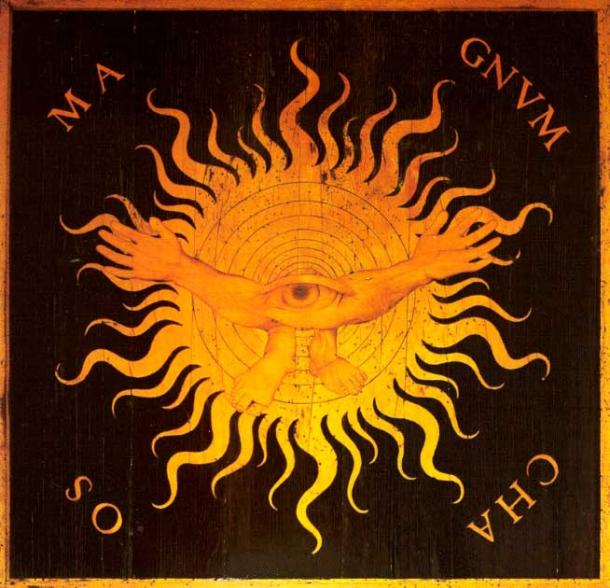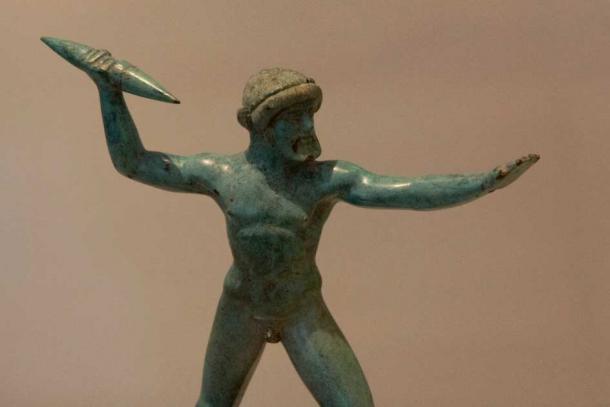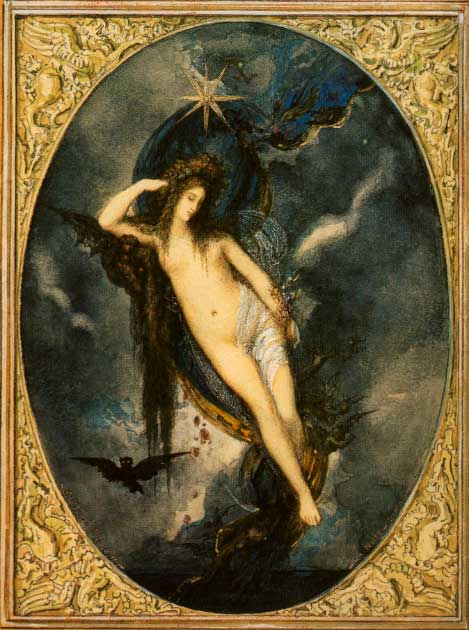The Greek God Chaos: The Primordial Cosmic Deity
Which came first: the chicken or the egg? If God created the universe, then who created God? If nothing existed before the Big Bang, then what created the cataclysm? The laws of the universe dictate that something can’t come from nothing. As a species, we have always struggled to explain how the universe as we know it originated. Religions have always tried to fill this gap in our knowledge, with mixed results. A prime example is the ancient Greek creation myth, which begins with Chaos. Chaos was an incredibly fluid and confusing concept in ancient Greece - sometimes a place, sometimes a goddess, and sometimes quite literally nothing.
Who, or What, was Chaos in Greek Mythology?
In Greek cosmology, first there was nothing, and then there was Chaos. What was Chaos? Well, that changed over time. Sometimes Chaos was described as a place, and other times Chaos was described as a deity. Over the years and centuries, Greek representations of Chaos kept evolving.
In the common tradition, Chaos was the progenitor of everything that followed, the original entity of creation that sparked everything. This stayed true, whether or not Chaos was portrayed as a place, deity, or both.
- Eris: The Gleeful Greek Goddess of Chaos and Discord
- Human Origins According to Ancient Greek Mythology

Wood-inlay image representing chaos magnum, the "great gulf", circa 1524 (Public Domain)
Chaos as a Place in Greek Mythology
Chaos is most often described as a place, although its description changed somewhat over time. Chaos was first mentioned in the text Theogony, by Hesiod, a Greek poet from around 750 BC. However. Hesiod did not attempt to give the place a physical description. Luckily, the etymology of Chaos gives us all the description we might need.
It is believed that the word Chaos comes from the Greek verbs cháskō and chaínō which mean to “gape wide open”. As such, the best translation to English is usually deemed to be an abyss, chasm, or gap. We can take this to mean that Hesiod believed Chaos to be a great, empty chasm in existence, devoid of anything.
Hesiod also made little effort to describe Chaos’s location post-creation. The Theogony seems to place it somewhere below the heavens and the earth, but above Tartarus, the lowest level of Greek cosmology. During Zeus’s battle with the Titans, Hesiod stated that Chaos was struck by Zeus’s thunderbolt, causing Chaos to be “seized by an astounding heat”. At the end of the Theogony, when Zeus is triumphant over the Titans, it is said Zeus banished the Titans to Chaos.
Other writers, however, placed Chaos between the earth and the heavens, not below the earth. According to these interpretations, Chaos was the void or chasm between the earth and the heavens. This would make it the sky.
Later writers made further adjustments to Chaos. Rather than a great emptiness, Chaos was portrayed as a chaotic, unruly mixture of elements that came before existence. The Greek poet Ovid’s Metamorphoses, written in the first century AD, described Chaos as, “rather a crude and indigested mass, a lifeless lump, unfashioned and unframed, of jarring seeds and justly Chaos was named.” This is where the modern English word chaos gets its meaning - a jumbled mixture of elements, rather than a great emptiness.
- Cosmic Oceans: The Primordial Waters of Ancient Creation Myths
- Battle of the Gods, When Titans Took on Zeus

In one version of the creation myth, the Greek god Chaos was struck by one of Zeus’s thunderbolts. Bronze figurine of Zeus Casting Thunderbolts, Sanctuary of Zeus at Dodona, circa 470 BC. (ZDE / CC BY SA 4.0)
The Greek God Chaos as the First Deity
Chaos was also sometimes described as an early deity. Unlike other gods and goddesses, as a deity Chaos was usually described as formless. Chaos bore no resemblance to humanity and was never shown to be in communication with other deities or mortals.
Chaos as a deity is usually thought of as female, but this isn’t wholly accurate. Chaos produced its children asexually, and in Greek the word Chaos is grammatically neutral, meaning it is neither male nor female.
Chaos was sometimes shown as a goddess of the air and birds, much like Gaia was a goddess of the earth. Chaos’s genealogy meant she was also sometimes shown to be a goddess of fate, thanks to her family connection to Nyx and the Moirae.
The Family of Chaos in Greek Mythology
Chaos is not normally portrayed as having had parents. Either it had sprouted from nothingness or had always existed. Soon after Chaos appeared, it was said that Gaia and Eros also appeared. Although they were sometimes said to have come from Chaos, traditionally they were never said to be its children.
This does not mean Chaos never had children. According to Hesiod, Chaos had two children: Nyx, the goddess of the night, and Erebus, the god of darkness. Chaos was said to have done this on her own. Nyx and Erebus then went on to become the parents of various other primordial deities and entities, such as Aether and Hemera.
For the most part, Hesiod's genealogy was the accepted account in antiquity, but there were exceptions. The Orphics rearranged the primordial deities to make Chaos the daughter of Chronos (time) and Ananke (Necessity).
The Latin author Hyginus, on the other hand, claimed Chaos was a child of Caligo (Mist) and that together they had Nyx and Erebus. Other authors claimed Eros and the Moirae (the three personifications of fate) were the children of Chaos.
Just as Chaos birthed Nyx and Erebus, Gaia and Eros also had children. These children were the Titans, who later gave birth to the gods. Interestingly, the two families never really intermingled and remained genealogically separate. The children of Chaos and Gaia were never shown to have children together.
Chaos’s role in Greek mythology was just that of a progenitor. She, or it, was given no personality and aside from the creation myth, very few myths mention Chaos. When Chaos is mentioned, it is more often as a place, rather than as a deity.

Nyx, the Goddess of the Night, was said to be the daughter of Chaos in Greek mythology. Painting of Nyx, Night Goddess by Gustave Moreau, 1880 (Public Domain)
Conclusion
All in all and perhaps aptly, it is surprisingly difficult to lock down an accurate description or explanation of what Chaos is. Every facet of Chaos seems to have changed or been rewritten at some point. Sometimes Chaos is a goddess, sometimes it's a place. Sometimes it’s both. Sometimes it's neither, just a great swirling mass of elements.
It is common for anyone interested in Greek mythology to have this problem. The old myths constantly evolved, with various authors and poets giving the old stories their spin. Yet even for Greek mythology, Chaos is particularly hard to pin down.
It is perhaps important not to get too laden with labels when thinking about Chaos in the context of Greek mythology. Throughout its different depictions, Chaos always existed to serve one function - to explain what came before.
Top Image: The god of Chaos in Greek mythology was depicted as both a goddess and a place. Source: RolffImages / Adobe Stock
By Robbie Mitchell
References
Atsma, A. n.d. Khaos. Theoi Project. Available at: https://www.theoi.com/Protogenos/Khaos.html
Kapach, A. July 22, 2022. Chaos. Mythopedia. Available at: https://mythopedia.com/topics/chaos
Chaos. April 7, 2021. GreekMythology.com. Available at: https://www.greekmythology.com/Other_Gods/Chaos/chaos.html
Smith, W. 1890. A Dictionary of Greek and Roman Antiquities. Boston: Little, Brown & Company. Available at: https://archive.org/details/adictionarygree05smitgoog

















